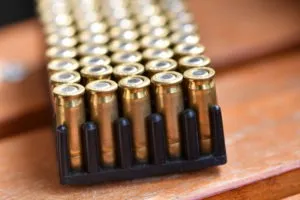Introduction
Welcome back, ladies and gents! In today’s session, we’re diving into a crucial topic: home defense, focusing on the differences between static (at home) and mobile (on the go) scenarios. In an increasingly unpredictable world, ensuring the safety of our homes and families is paramount. We’ll discuss the necessary ammunition and weapon systems for both static and mobile defense.
Static Defense: Home Ammunition and Weapons
1. Mounted Weapon Systems: For home defense, consider bipod or tripod-mounted weapon systems. These are ideal for static positions where mobility is not required. If you’re in a state where it’s legal, fully automatic weapons can provide significant firepower. These systems should be fixed in place, reducing the need for constant movement and making them more manageable during prolonged engagements.
2. Close Quarters Battle (CQB) Tools: Shotguns are excellent for close-quarter combat within your home. They are perfect for defending tight spaces and ensuring safety during home intrusions. Setting up fatal funnels in your home can maximize the effectiveness of these weapons.
3. Ammunition Stockpile: Ensure you have at least 5,000 rounds of ammunition at home. This may seem excessive, but in volatile situations, you can run through ammo quickly. Having a large stockpile also provides the opportunity for bartering and trading if necessary.
4. Defensive Measures: Consider setting up booby traps or early warning devices. Simple mechanisms like flashbangs or tripwire alarms can alert you to intruders. For those with access, more advanced setups like claymore mines can be a formidable defense.
5. Long-Range Weapon Systems: In static defense, long-range weapons such as the 300 Win Mag, 338 Lapua, or 7.62x54R are invaluable. These can be used from elevated positions like a crow’s nest or rooftop, giving you the ability to engage threats from a distance.
6. Night Vision: Invest in night vision goggles (NVGs) or thermal imaging. These tools give you a significant advantage by allowing you to see in low-light conditions without revealing your position.
Mobile Defense: On-the-Go Ammunition and Weapons
1. Primary and Secondary Weapons: For mobile defense, you’ll need a primary weapon like an M4, AR-15, or AK-47. These rifles are versatile and widely available. Your secondary weapon should be a reliable 9mm handgun, such as a Glock 17 or a SIG Sauer P365. These are common and allow for easy ammo resupply.
2. Ammunition Limits: When mobile, carry around 500 rounds for your primary weapon and about 100 rounds for your secondary. While this is substantial, it’s manageable and ensures you’re prepared for extended engagements.
3. Explosive Ordnance: If available, carry three fragmentation grenades and three flashbangs. These can be lifesavers in critical situations by either inflicting damage or providing a distraction.
4. Lightweight Gear: Opt for a chest rig to keep your gear organized and accessible. A day pack with at least three days of supplies is essential. Include items like water, food, medical supplies, and spare ammunition.
5. Navigation and Power: Carry a GPS device, preferably a wrist-mounted Garmin, and a traditional compass. Pack extra batteries or a portable solar charger to ensure your devices remain operational.
6. Night Vision and Infrared: Just like in static defense, night vision is crucial when mobile. Infrared lights can help you navigate and communicate with allies without giving away your position.
Conclusion
Whether you’re defending your home or moving through potentially hostile environments, preparation is key. Stockpile ammunition, equip yourself with versatile weapons, and ensure you have the necessary tools and training to protect yourself and your loved ones. Stay tuned for future parts where we’ll delve deeper into food, communication, medical supplies, and more.
Remember, the best defense is a well-prepared offense. Stay safe, stay vigilant, and always be ready. Let me know your questions and thoughts. See you soon!
Stay Lethal My Friends,
Joe Malone

